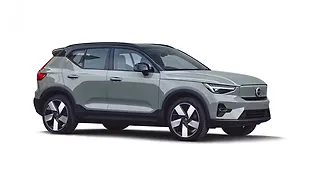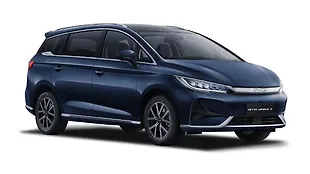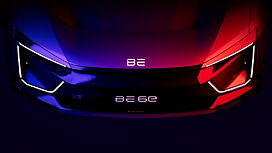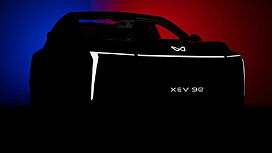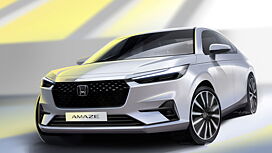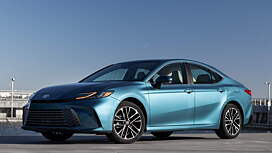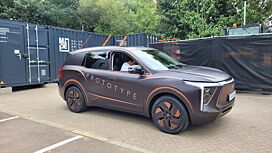Introduction
After a series of spy pictures and a handful of teaser images and videos, the Mahindra Bolero Neo has finally been launched in the country with a starting price of Rs 8.48 lakh (ex-showroom, all-India). Adopting the legendary ‘Bolero’ prefix, the Bolero Neo is more of a re-introduction of the discontinued TUV300. It is available in three trims – N4, N8, and N10, with a fourth N10 (O) variant to be inducted in the coming months. Along with the new nomenclature, the Bolero gets a refreshed exterior and a BS6 compliant mHawk 100 1.5-litre, three-cylinder diesel engine.
How is it on the outside?

The Bolero Neo shares its body-on-frame underpinnings with the Scorpio making it one of its kind among the monocoque-based compact SUVs in the segment.Visually, the Neo retains the boxy and tall stance of the TUV300. What’s new though are the squared headlamp units with integrated horizontal daytime running lights. The front grille with vertical chrome slats along with a single chrome stripe across the bonnet line gives the SUV a muscular stance. Further down, the bumpers have been reworked with a redesigned housing for the fog lamps and a skid plate at the bottom.

Moving to the side, the only visible change and an attempt to twin with the robust Bolero is the black horizontal insert that runs parallel to the door handles. While the roof rails have been given a miss, the squared wheel arches surrounded by plastic cladding paired with the 15-inch five-spoke alloy wheels and side footstep give it a rugged appearance.

The rear is dominated by the tailgate-mounted spare wheel with X-shaped cover, a roof-mounted spoiler, vertically placed tail lamps, rear wiper, and parking sensors. The Bolero Neo can be had with six exterior shades – Highway Red, Pearl White, Diamond White, Rocky Beige, Napoli Black, and Majestic Silver.
How is it on the inside?

The cabin of the Bolero Neo instantly reminds one of the TUV300. The two-tone beige and black colour theme of the upright dashboard is stacked with a seven-inch touchscreen infotainment system that gets Bluetooth, AUX, USB, along with six speakers. The old-school yet utilitarian instrument cluster is commanded by a three-spoke adjustable steering wheel with mounted controls along with a cruise control feature.

The centre console does not appear to have much space for stowage as a major portion is occupied by the control buttons for the power windows. However, the gloss black inserts around the gear lever, couple of cup holders, and individual armrests for both driver and the front passenger try to make up for the consumed space. The fabric beige upholstery with the diamond-type pattern blends nicely with the dashboard and gives an airy feel to the cabin.

The Neo gets a bench-type seat for the second-row passengers and jump seats in the last row in case the travel comprises more occupants than luggage. The middle row appears to be spacious with an armrest and big door pockets. The side and rear footstep make ingress and egress from the cabin an easy affair. Other highlights in the cabin include electrically adjustable ORVMs, rear wiper, height-adjustable driver seat, central locking, and Mahindra’s Blue Sense connected car tech.

What’s under the hood?

Under the raised bonnet is the updated BS6 compliant 1.5-litre, three-cylinder mHawk 100 diesel engine. Yes, it is the same oil burner that powered the earlier TUV300 and it even has a similar output of 100bhp and 260Nm of torque. The five-speed manual gearbox is the sole transmission option distributing the power to the rear wheels. We have driven the Bolero Neo and our full-fledged review is scheduled to Go live on 17 July, 2021.

On the safety front, Mahindra offers features such as dual front airbags, reverse parking camera, ABS with EBD, corner braking control, and seat belt reminder as standard. Interestingly, the ISOFIX child seat anchorages are limited only to the top N10 trim.
Competition and Pricing

At Rs 8.48 lakh (ex-showroom) for the N4 variant, the Neo is just Rs 6,500 more than the base variant of the Bolero. On comparing the top-spec variants, the Neo is priced Rs 59,000 higher than the standard Bolero. Being a rear-wheel-drive body-on-frame SUV, the Bolero Neo is a proper SUV that can effortlessly tread over any given terrain; unlike others who largely form over function.
Photography: Kaustubh Gandhi

![महिंद्रा बोलेरो नियो [2021-2022] इमेज महिंद्रा बोलेरो नियो [2021-2022] इमेज](https://imgd.aeplcdn.com/272x153/n/cw/ec/97853/bolero-neo-exterior-right-front-three-quarter-7.jpeg?isig=0&q=80)











